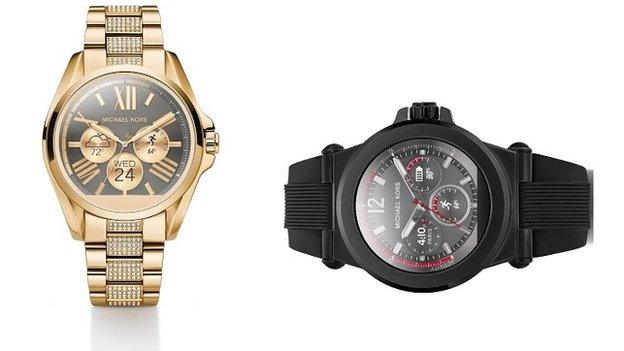Samsung Gear S3 watches get bigger screens and batteries
- Published
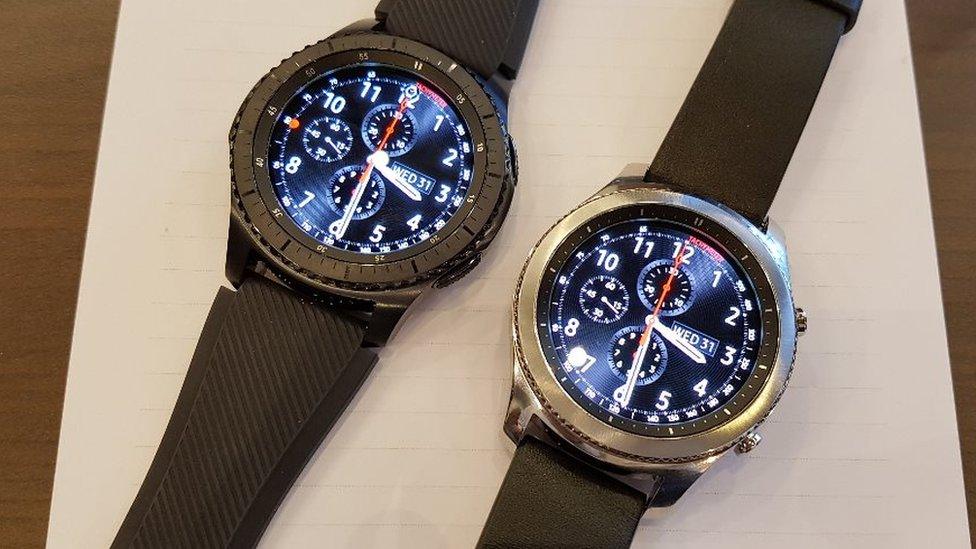
The Frontier Gear S3, on the left, has a 4G chip but is more expensive than the Classic edition
Samsung has added bigger screens and batteries, and more scratch-resistant glass to its latest two smartwatches.
The higher-end version of the Gear S3 can now connect directly to 4G mobile networks - its predecessor was limited to 3G.
Other firms are also announcing new smartwatches at Berlin's Ifa tech show, including Asus, Withings and Fossil.
They do so shortly after the sector experienced its first drop in demand, according to a recent report.
IDC said shipments of smartwatches were 32% lower in the April-to-June quarter than they were during the same period in 2015.
Much of this was, however, due to a decline in sales of Apple's Watch, which had been on sale for a year and has yet to receive an update.

Source: IDC
Bigger screens
Both versions of Samsung's watch now feature a 1.3in (3cm) circular screen - a slight improvement on the 1.2in dimension of last years' line-up.
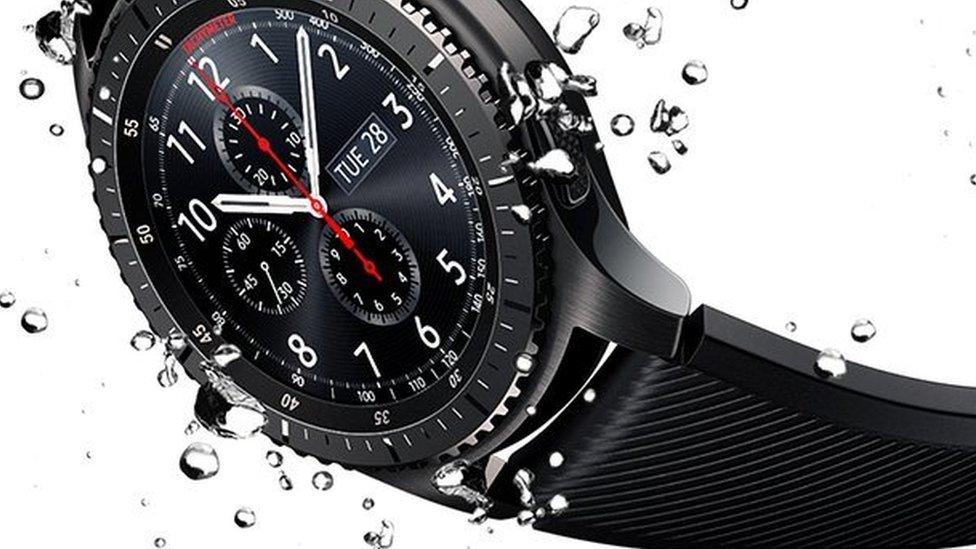
The watches are said to be usable 1.5m (4.9ft) underwater for half an hour
This is made possible, in part, by boosting the battery capacity of both to 380mAh. The firm says that should deliver up to four days of life between charges.
Only the Frontier version of the Gear S3 supports 4G, which would involve a mobile data contract.
The Classic option relies on a Bluetooth connection to a smartphone.
The devices are also the first confirmed to use Corning's new Gorilla Glass SR+, which is said to offer similar scratch resistance to sapphire.
As before, the devices run on the Tizen operating system and can buy goods via the Samsung Pay mobile wallet service.
But they now have the ability to mimic the signal produced by the magnetic strips of credit and debit cards, meaning they can be used when stores do not have NFC (near-field communication) pay terminals.
Despite these upgrades, one expert suggested it was improvements to the styling of their buttons and case that were most significant.
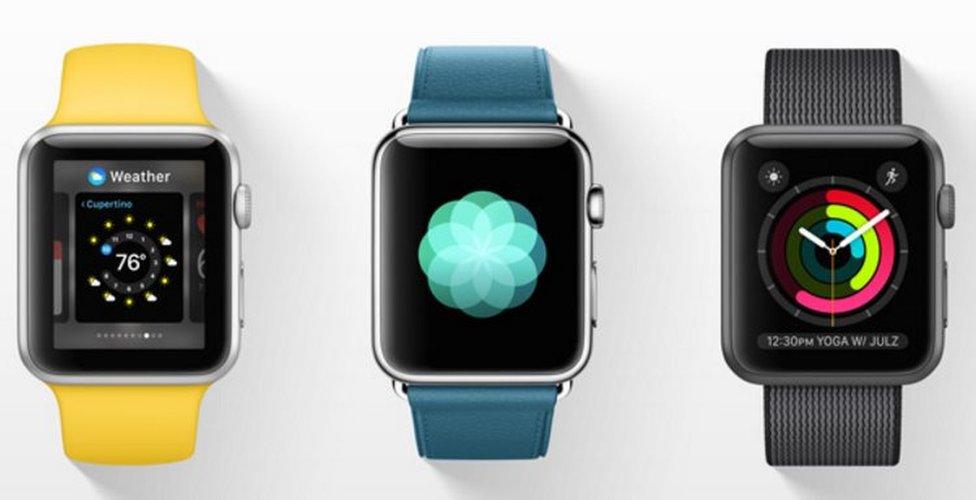
The Apple Watch does not currently feature a GPS chip or connect directly to mobile networks
"It's really minor detailing, but on someone's wrist the devices immediately look more like classic watches and less like the geek-ware," said Ben Wood from the CCS Insight.
"But the big question is: Do consumers want 'full-touch' watches?
"We believe that the smart analogue watch is the area where there's a bigger opportunity."
Hybrid tech
Nokia's Withings division is among those taking this latter approach.
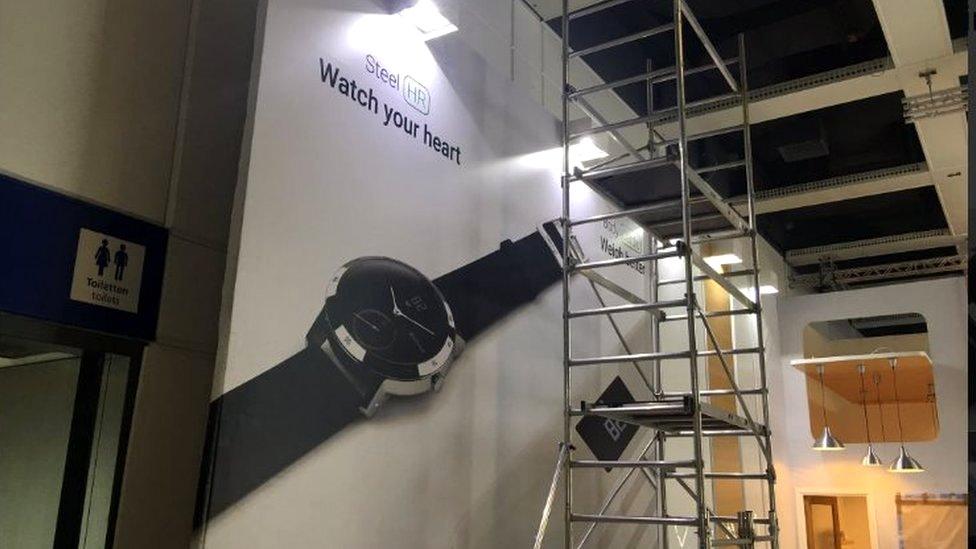
Withings' latest watch appears to include a heart rate sensor
Rather than seek to put a touchscreen on people's wrists, its Activite devices combine a standard quartz clock-movement with fitness tracking sensors that send readings to smartphones.
The firm has yet to make an official announcement, but banners at Ifa indicate its latest model adds a heart rate sensor to the mix.
Asus, however, is sticking with touchscreens and Google's Android Wear operating system.
Its new ZenWatch 3 has a circular face, marking a shift from earlier square designs.
The 1.4in display is larger than Samsung's. However, the device has a lower water resistance rating and no way to connect directly to mobile networks.
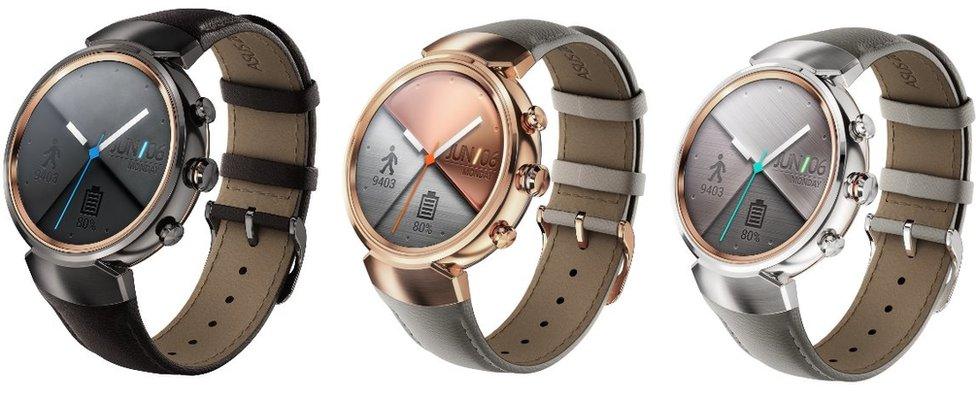
Asus has opted for a circular watchface this time round
"Asus and others face the same challenge with smartwatches as they do with smartphones," said Mr Wood.
"Apple and Samsung's marketing budgets outgun them and risk obliterating consumer interest."
- Published31 August 2016
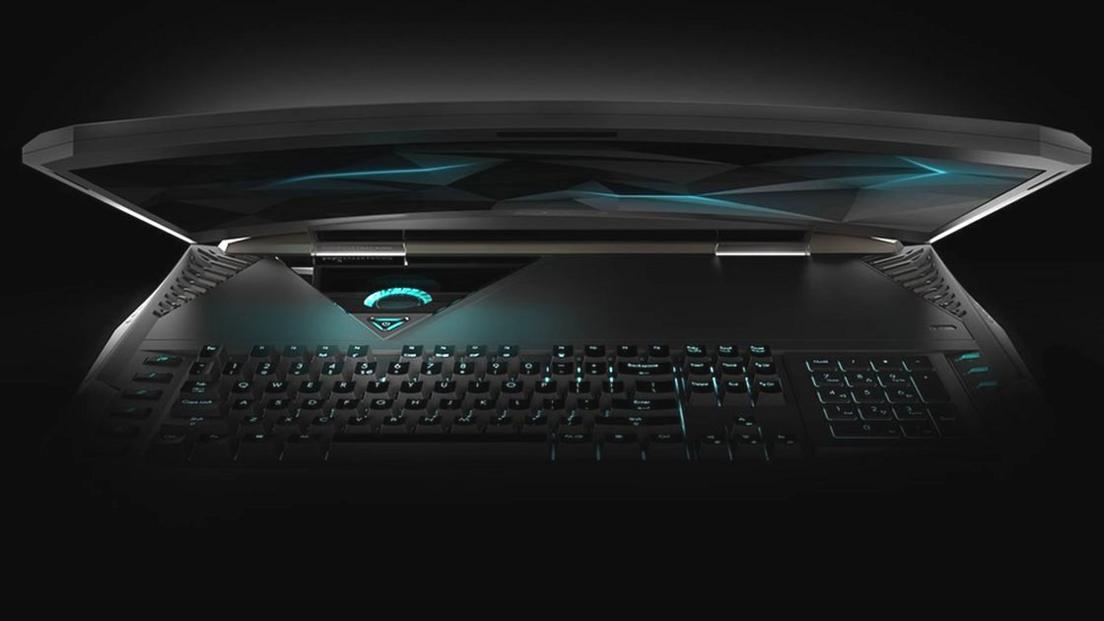
- Published17 March 2016
